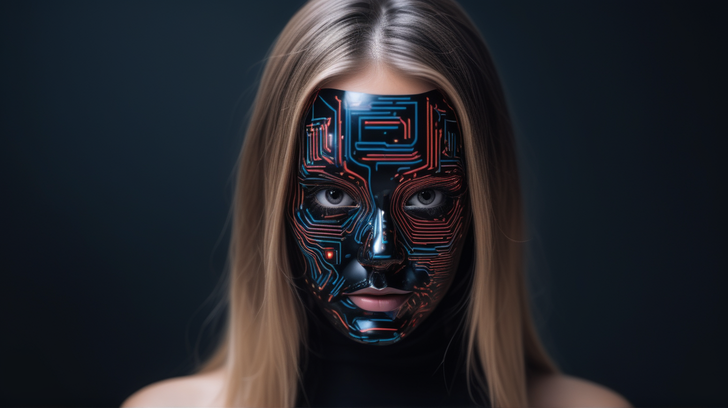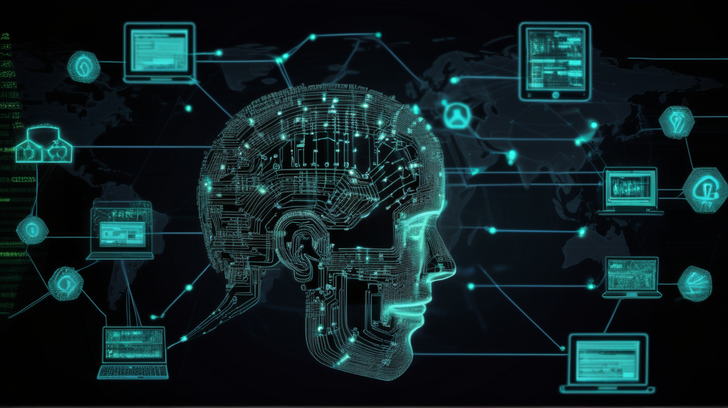Unmasking the Dark Side of AI and ML: Malicious Use and Abuses.
Artificial Intelligence (AI) and Machine Learning (ML) have revolutionized numerous industries, enhancing efficiency, accuracy, and innovation. However, behind the scenes, there exists a dark side to AI and ML that is often overlooked. This blog post aims to delve into the unsettling realm of the malicious use and abuses of these powerful technologies. From deep fake videos and fake news generation to cyber-attacks and privacy invasions, we will uncover the potential risks and dangers associated with AI and ML. By understanding the dark side, we can better equip ourselves to navigate the ethical and security challenges that arise in the age of advanced technology.

1. The Rise of Malicious Use in AI and ML
In recent years, the rapid advancements in Artificial Intelligence (AI) and Machine Learning (ML) have presented incredible opportunities for innovation and progress across various industries. However, as with any powerful technology, there is a dark side that must be acknowledged and addressed: the rise of malicious use in AI and ML. The malicious use of AI and ML refers to the intentional manipulation and exploitation of these technologies for harmful purposes. This includes activities such as the development of AI-powered cyber-attacks, deep fake technology for spreading misinformation, and the creation of AI-driven malware. These malicious applications pose a significant threat to individuals, organizations, and society as a whole. One of the reasons why AI and ML are particularly susceptible to malicious use is their ability to automate and amplify existing threats. Attackers can now utilize AI algorithms to execute sophisticated attacks on a massive scale, making it increasingly challenging to detect and defend against them. For example, AI-powered phishing attacks can generate highly convincing and personalized emails, increasing the likelihood of successful data breaches. Another concerning aspect is the creation of deep fake content using ML algorithms. Deep Fakes are manipulated audio or video files that convincingly depict individuals saying or doing things they never actually did. This technology has the potential to undermine trust, deceive the public, and incite social and political unrest. Furthermore, AI and ML are also being exploited by cybercriminals to develop advanced malware and evasion techniques. By leveraging ML algorithms, malware can adapt and evolve to evade traditional security measures, making it extremely difficult to detect and mitigate these threats effectively.

To address the rise of malicious use in AI and ML, it is crucial to prioritize ethical considerations and implement robust security measures. This includes developing rigorous guidelines and regulations for the responsible use of AI and ML technologies. Organizations must also invest in robust cyber-security measures that can detect and mitigate AI-driven attacks effectively.
Additionally, promoting awareness and educating individuals about the potential risks and dangers associated with malicious use of AI and ML is essential. By fostering a greater understanding of these threats, individuals can be better equipped to identify and protect themselves against malicious activities. In conclusion, while AI and ML have the potential to revolutionize various sectors, it is imperative to recognize and address the dark side of these technologies. The rise of malicious use in AI and ML poses significant challenges, but through responsible usage, robust security measures, and increased awareness, we can mitigate the risks and ensure a safer and more secure future.
2. Deep fakes and Fake News: Manipulating Reality
In the digital age, we are witnessing the rise of a powerful tool that has the potential to manipulate reality in ways we never thought possible – deep fakes. Deep fakes are a product of artificial intelligence (AI) and machine learning (ML) algorithms that can seamlessly superimpose one person’s face onto another’s body, creating extremely convincing videos that appear to be genuine. While this technology has the potential for innocent and fun applications, it also holds a dark side that cannot be ignored. One of the most concerning aspects of deep fakes is their potential to spread fake news and misinformation. With the ability to create realistic videos of public figures saying and doing things they never actually did, deep fakes can be used as a potent weapon to deceive and manipulate the masses.

Imagine the chaos that could ensue if a deep fake video of a political leader making inflammatory remarks were to go viral, leading to social unrest and a breakdown of trust in our institutions. Moreover, deep fakes have the potential to weaponries revenge porn, as individuals can be maliciously targeted by having their faces digitally replaced in explicit content. This not only violates personal privacy but can also have devastating consequences for the victims, including reputational damage, emotional trauma, and even threats to their personal and professional lives. The ease with which deep fakes can be created and shared poses a significant challenge for society. It becomes increasingly difficult for individuals to discern between real and fake content, leading to an erosion of trust in what we see and hear. This can have far-reaching implications for journalism, the justice system, and democratic processes, as false information can be used to manipulate public opinion and subvert the truth. As we continue to marvel at the advancements in AI and ML, it is crucial that we also acknowledge and address the darker side of these technologies.
Stricter regulations, increased awareness, and the development of countermeasures are necessary to protect individuals, institutions, and the integrity of our society from the malicious use and abuses of deep fakes and fake news. Only through collective efforts can we hope to safeguard the truth and mitigate the potential harms posed by these deceptive technologies.
3. AI-Driven Cyber-attacks: A New Frontier for Hackers
As artificial intelligence (AI) and machine learning (ML) continue to advance at an astonishing pace, it’s important to acknowledge the dark side that accompanies these technologies. AI-driven cyber-attacks have emerged as a new frontier for hackers, and understanding their potential impact is crucial for safeguarding our digital world. Traditionally, cyber-attacks have relied on human intervention, but with the integration of AI and ML, hackers now have powerful tools at their disposal. These technologies enable attackers to automate their malicious activities, making them more efficient, scalable, and difficult to detect. One concerning aspect of AI-driven cyber-attacks is the ability to launch sophisticated and targeted attacks. Machine learning algorithms can analyse vast amounts of data to identify vulnerabilities in a system’s defences-, enabling hackers to exploit weaknesses with precision.

This level of sophistication poses a significant challenge for cyber security professionals who must constantly adapt their strategies to counter evolving threats. Additionally, AI and ML can be used to impersonate individuals or generate convincing fake content. Deep-fake technology, for instance, allows the creation of realistic videos or audio that appears to be genuine but is, in fact, manipulated. This can be employed to deceive individuals, manipulate public opinion, or even blackmail unsuspecting victims. Another area of concern is the potential for AI and ML to be used in the development of autonomous malware. These self-learning programs can adapt to their target environment, evading traditional security measures and spreading rapidly. This not only increases the scale and impact of cyber-attacks but also presents a challenge in terms of attribution and accountability. To combat these threats, it is imperative that organizations invest in advanced cyber security measures that incorporate AI and ML capabilities. By leveraging these technologies themselves, security professionals can stay one step ahead of cybercriminals and effectively detect, analyse, and respond to AI-driven attacks. Moreover, international collaboration and regulatory frameworks are essential to address the malicious use of AI and ML. Governments and industry stakeholders must work together to establish guidelines, standards, and ethical frameworks that govern the development and deployment of these technologies.
This will help mitigate the risks associated with AI-driven cyber-attacks and ensure responsible use. In conclusion, while AI and ML offer immense potential for innovation and advancement, it is crucial to shine a light on their dark side. AI-driven cyber-attacks represent a new frontier for hackers, posing significant challenges to cyber security. By acknowledging and addressing these risks, we can work towards harnessing the power of AI and ML for a safer and more secure digital future.
4. Unlocking New Opportunities and Improving Customer Trust
As AI and ML technologies continue to advance, the dark side of these innovations is becoming increasingly apparent. One of the most concerning aspects is the potential for privacy breaches and data exploitation. With the vast amounts of data being collected and analysed by AI and ML algorithms, there is a significant risk of sensitive information falling into the wrong hands. AI and ML systems are designed to learn from data, but this very process raises concerns about the protection of personal information. In order to train these systems effectively, they require access to vast datasets that often include personal details, such as names, addresses, and even financial information. If not properly secured, this data can be vulnerable to malicious actors who can exploit it for various nefarious purposes. Furthermore, the algorithms used in AI and ML can also be manipulated to extract sensitive information from seemingly innocuous data. For example, through pattern recognition, an algorithm could potentially derive personal information from social media posts or online activities.

This level of data exploitation can lead to invasion of privacy, identity theft, and other serious consequences. Another concern lies in the use of AI and ML for targeted advertising and personalized marketing. While these techniques aim to deliver tailored experiences to consumers, they also rely heavily on collecting and analysing vast amounts of personal data. This raises questions about consent, transparency, and control over one’s own data.
Users may unknowingly provide access to their personal information and find themselves bombarded with intrusive advertisements and unwanted solicitations. To address these privacy concerns and prevent data exploitation, it is crucial for organizations and individuals to prioritize data protection and security measures. Robust encryption techniques, stringent access controls, and regular data audits are just a few of the steps that can be taken to mitigate the risks. Additionally, policymakers must establish clear regulations and guidelines to govern the collection, storage, and use of personal data in the context of AI and ML. While AI and ML offer immense benefits and potential for progress, it is essential to recognize and address the dark side of these technologies. By prioritizing privacy concerns and taking proactive measures to safeguard data, we can ensure that AI and ML are used responsibly and ethically, protecting individuals from the malicious use and abuses that can accompany these powerful tools.
Recent Posts
Check Our Digital Marketing Services
- Amazon Advertising & Amazon Listing
- Contact Us
- Content Marketing
- Email Marketing
- Facebook Advertising
- Flipkart Advertising & Flipkart Listing
- Get Quote
- Google Advertising
- Google My Business (GMB) Management
- Portfolio
- PPC(Pay-per-click) Advertising
- Privacy Policy
- SEO services in varanasi
- Services
- SMM
- SMO
- Testimonials
- Website Development
- WhatsApp Marketing